The Rocks are The Road: A Sweet Smell of Roses
We are excited to share a series of blog posts created in collaboration with the Curriculum in Early Childhood Education students at Holyoke Community College! The HCC students completed a Service Learning Project with Carle Art Educators this spring, continuing a partnership developed over the past two years. Students worked in groups to develop projects inspired by books in The Carle’s exhibition Picture the Dream: The Story of the Civil Rights Movement through Children’s Books. Students Alexa Janicki, Bryanna Rivera, and Rebecca Hawkins planned the projects, experimented with materials, and documented their process for the blog. The following is their description of their project. Their project responds to a book included in the second section of the exhibition, “The Rocks are the Road,” featuring the Civil Rights Movement’s key players and events.
Our group was assigned to the second section of the exhibition, “The Rocks are the Road.” This section contains books that take on intense and often difficult subjects such as segregation, marches, civil disobedience, violence, and hate. While these can be tough to talk about, especially with children, the incredible books featured in “The Rocks are the Road” use personal stories and beautiful illustrations to present these topics in a way that is educational and thought-provoking for children and families. We felt that the best way to approach this as an artistic endeavor would be to focus on identifying adversity that we see in the world and creating artwork that challenges that adversity. What do you notice in your life that you feel needs to change? Where do you see inequality? How can you as an individual challenge that inequality?
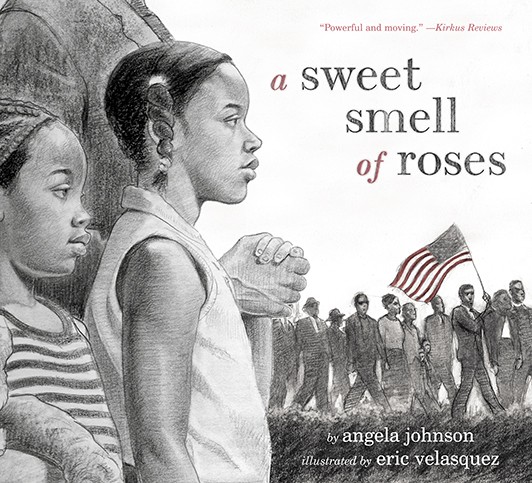
It was quite difficult for us to choose a book - there are so many great ones! - but we finally settled on A Sweet Smell of Roses by Angela Johnson, with illustrations by Eric Velasquez. This story depicts two young Black sisters who see things they want to change and find a way to act by joining a march against inequality. We felt this story was a good way to start conversations around injustice with children. Some of us chose to make protest signs inspired by those in the book; some used the illustrations’ sparse color scheme to express the emotions we felt as we read.
We encourage children, families, and educators to gather a range of materials, read the book together, and discuss the emotions it brings up. Think of places that you may notice injustice or discrimination in your own life - what can you do to change that? Then, use the materials to create artwork inspired by your conversation. Here’s how the different members of our group used materials to respond to the book and the conversations that come up.
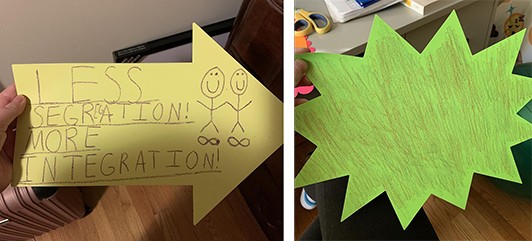
To create her protest signs, Alexa found construction paper of various shapes and colors. On one, she used crayons to write a powerful statement in a large font. Alexa also drew two infinity symbols and people to go with the written words, to indicate that everyone can work towards treating people more equitably. For her wordless sign, Alexa used black and red crayons together. She shaded with both of those colors onto the paper to make a powerful statement without any words involved.
Creating a protest sign can be powerful and easy to make. A good starting point is to brainstorm what needs to change to make our world a better place. Using paper and drawing tools, each child will have a chance to respond to the brainstorm however they would like. Creating a protest sign, even without words, can be powerful, especially coming from a child’s perspective.
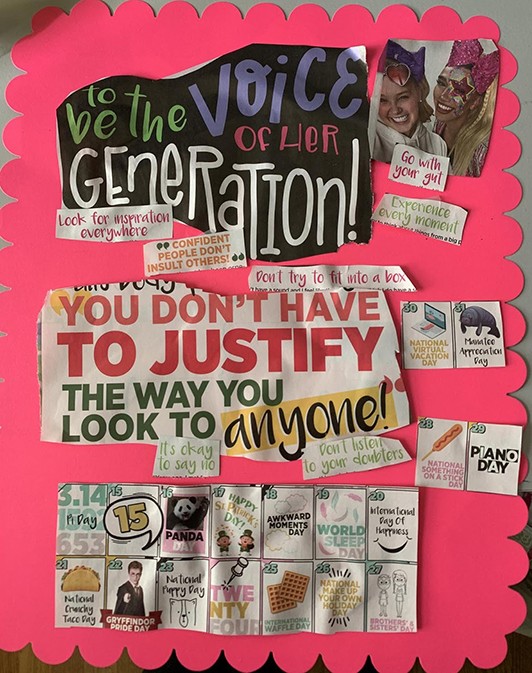
Another idea Alexa explored was creating an inspirational collage by looking for source material in magazines and catalogues. Children can be invited to search for inspirational words and images. They can then cut out the pictures and text to arrange on their paper, and tape or glue them down. To make her collage above, Alexa used scissors, clear tape, and a colorful piece of construction paper.
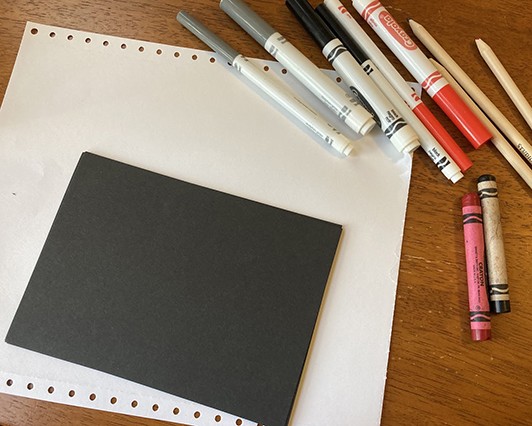
Becca was initially drawn to A Sweet Smell of Roses because of the striking black, white, and grey color scheme which is punctuated with spots of bright red. She challenged herself to use this color palette to make her artwork by gathering red and black materials from around the house - markers, crayons, paper, magazine print. Get creative with materials, especially if you’re at home! Paints, chalk, fabric, tiles, blocks - Becca chose to limit the color scheme but not the materials.
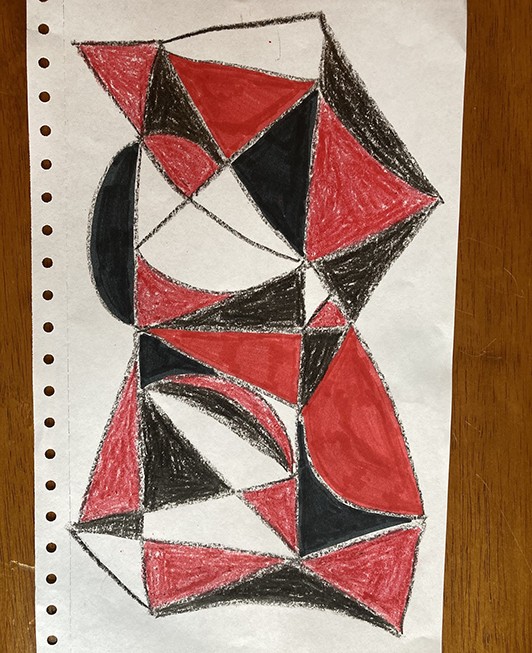
First, she played with black and red crayons and markers on white paper, exploring the colors and seeing where they led. Becca works with infants and toddlers and has a lot of experience adapting projects to that level. She felt that this could be an entry point for younger artists who may not be able to formulate an abstract idea.
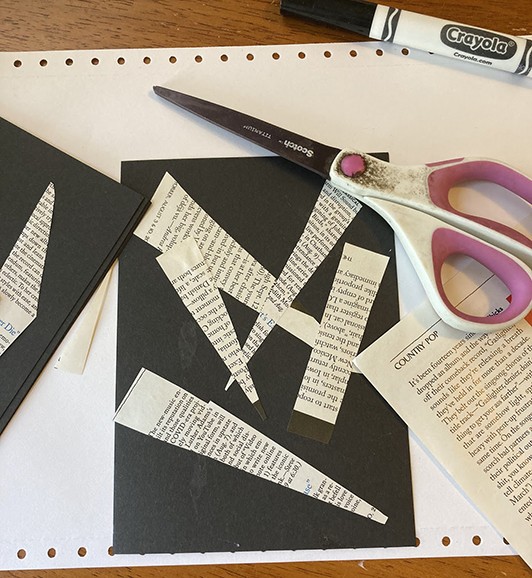
Next, continuing with the black, white, and red theme, Becca cut out some text and letters from a magazine and arranged them on black cardstock.
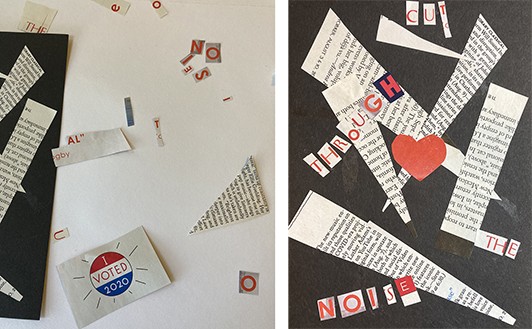
While reading A Sweet Smell of Roses she was inspired by the two little girls going out and demonstrating for what they believe is right; this is a great message for young readers who might feel that they have no power because they are young. In the words of Mr. Rogers, we should “look for the helpers,” and, in this case, be the helpers. Becca used text and pictures from magazines to create the collage above.
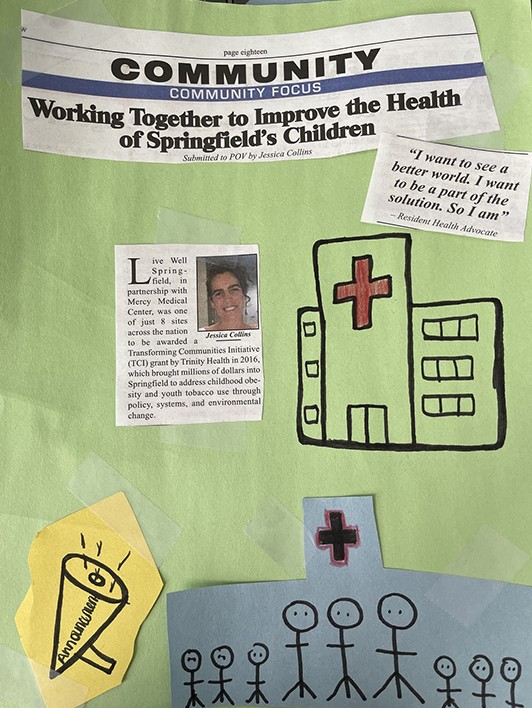
Bryanna decided to share the book, have conversations, and make art with her preschool students. After gathering the children all together to read the book A Sweet Smell of Roses, Bryanna asked questions about what her students believed in and what they would want to stand up for. Bryanna and her students searched for important articles within their community newspaper.
They decided to create protest signs together using construction paper, scissors, and the news articles they found. Children worked both independently and collaboratively with Bryanna. First, children had the chance to pick a piece of colored construction paper. At this point, Bryanna and a group of students decided to come together and work on a green piece of construction paper. Bryanna started by cutting out two pieces of colored construction paper and then wanted to add drawings. She asked the students to help her brainstorm ideas for the drawing that could accompany the writing they found in the newspaper. The children filled in the crosses with red colored pencils in the hospital sign and traced the black cross to represent health. With the help of the students, Bryanna picked out a quote from someone in the article and glued it to the paper.
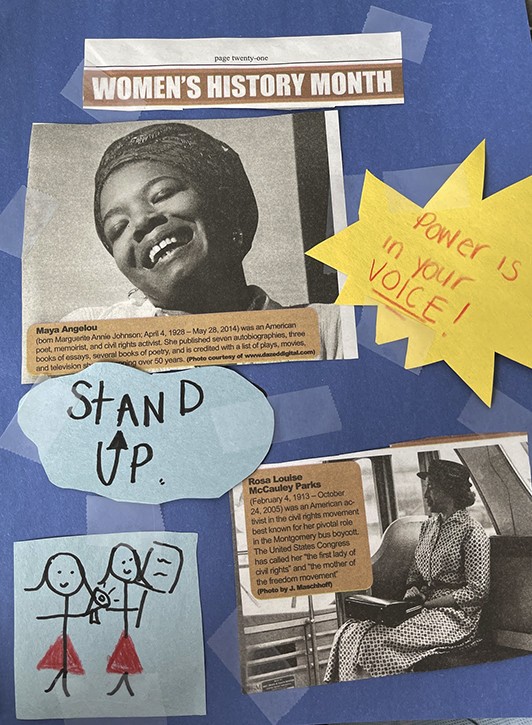
Bryanna invited the students to help her make another sign. They gathered images of women from the newspaper. They read the title of the page and information about the women they saw. Then children helped Bryanna relay a message through a wonderful sign sharing that you can work with others to stand up for what you believe in.
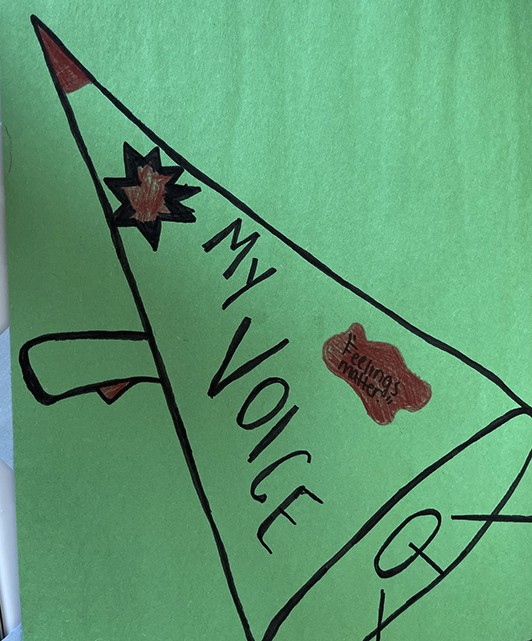
For their last collaboration, Bryanna asked the children “What would you bring to a protest?.” While they brainstormed many ideas, they all loved the idea of her drawing a megaphone. She then wrote on the megaphone “My Voice” showing them that their voice will be heard clearly through this device.
We all approached the prompt differently, but we were all inspired by the ideas we encountered in the exhibition. The books in “The Rocks are the Road” section of the exhibition often feature as their main characters children who have endured terrifying and unjust experiences. The books we read caused us to feel angry, sad, and helpless. But they also invoke feelings of intense empathy, comradery, perseverance, determination, love, and joy. The authors and illustrators of these books are joined by a common thread: even though these stories are hard to tell and occasionally hard to read, they show us what we are capable of. They inspire young readers to stand up, speak out, and create meaningful, lasting change. Children reading these books will feel ignited by their powerful message and driven to notice injustice, speak out against it, and change it. The Picture the Dream exhibition will spark intense conversations between children, families, and educators and remind us all, especially the youngest readers, that we are powerful when we join together.
We hope this post allows you to make artwork using what you can find within your home to express the emotions invoked by A Sweet Smell of Roses. This is a great opportunity for children, families, and educators to speak through their artwork and let their voices be heard.
The Carle wants to thank the students of EDU 210, Curriculum in Early Childhood Education, for sharing their knowledge and creative responses to picture books. We hope you enjoy exploring books and materials!
